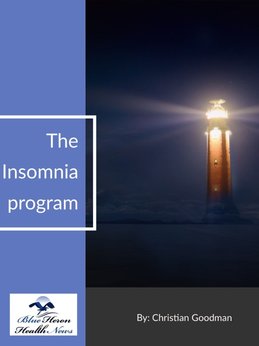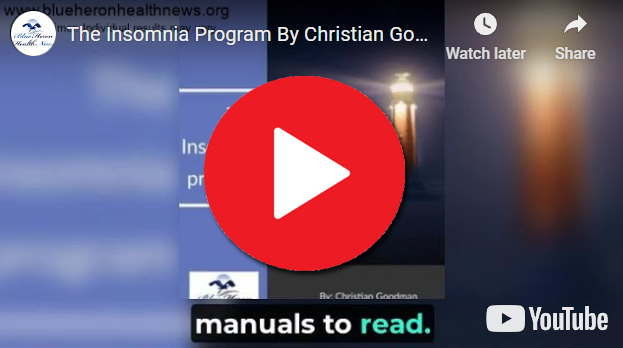
The Insomnia Program™ By Christian Goodman This program has been created by Christian Goodman, a natural health expert and sufferer of insomnia. He has used an audio program to let your fall sleep with the help of a bit of a hypnotic effect on your body.
What tests are used to diagnose insomnia?
Diagnosing insomnia typically involves a combination of medical history, physical examination, and various tests to rule out other underlying conditions or sleep disorders. Here are the most common methods and tests used to diagnose insomnia:
1. Medical and Sleep History
- Patient Interview: A detailed history of the patient’s sleep patterns, sleep habits, lifestyle, and any associated symptoms (like stress, anxiety, or depression) is essential. This includes questions about:
- Difficulty falling asleep or staying asleep.
- Frequency and duration of sleep problems.
- Daytime fatigue or irritability.
- Environmental factors affecting sleep (noise, light, bed comfort).
- Sleep Diary: The patient may be asked to keep a sleep diary for 1-2 weeks, recording their sleep and wake times, the quality of sleep, and any disturbances. This helps provide a clearer picture of the sleep patterns and insomnia severity.
2. Physical Examination
- A physical exam may be performed to identify potential medical issues that could contribute to insomnia, such as pain, breathing problems, or conditions like restless legs syndrome.
- The doctor may also examine signs of anxiety or depression, which are common contributors to insomnia.
3. Sleep Questionnaires
Several standardized questionnaires can help assess the severity and impact of insomnia:
- Insomnia Severity Index (ISI): A self-reported questionnaire that assesses the severity of insomnia and its impact on daily functioning.
- Epworth Sleepiness Scale (ESS): Measures daytime sleepiness, which may help differentiate between insomnia and other sleep disorders like sleep apnea.
- Pittsburgh Sleep Quality Index (PSQI): Assesses overall sleep quality and disturbances over a month-long period.
4. Polysomnography (Sleep Study)
- Polysomnography (PSG) is an overnight sleep study typically conducted in a sleep lab. It records brain waves, eye movements, breathing, heart rate, oxygen levels, and body movements during sleep. This test is not commonly used for straightforward cases of insomnia but may be ordered to rule out other sleep disorders like sleep apnea, periodic limb movement disorder, or narcolepsy.
- PSG is especially recommended if there are symptoms suggesting other conditions that might contribute to sleep problems, such as snoring or frequent awakenings due to breathing difficulties.
5. Actigraphy
- Actigraphy involves wearing a small device (similar to a wristwatch) that monitors movement and provides data on sleep-wake cycles. This test is typically done over several days or weeks and is particularly useful for diagnosing circadian rhythm disorders and understanding sleep patterns in the patient’s natural environment.
- Actigraphy is less invasive than polysomnography and often used when the sleep diary is not sufficient to identify sleep-wake patterns.
6. Home Sleep Tests
In cases where sleep apnea is suspected, a simplified version of a polysomnography can be done at home. This test monitors breathing, heart rate, and oxygen levels while the patient sleeps at home, which can help rule out or confirm conditions like obstructive sleep apnea.
7. Blood Tests
- Blood tests may be ordered to rule out underlying medical conditions that could be contributing to insomnia, such as thyroid disorders (hypothyroidism or hyperthyroidism), iron deficiency, or hormonal imbalances. These tests help identify or exclude physical conditions that could affect sleep.
8. Psychiatric Evaluation
- Since insomnia is often associated with mental health conditions like anxiety disorders, depression, or post-traumatic stress disorder (PTSD), a psychiatric evaluation may be recommended. This can help determine whether the insomnia is a symptom of an underlying psychological condition.
9. Multiple Sleep Latency Test (MSLT)
- The Multiple Sleep Latency Test is used to measure how quickly a person falls asleep in a quiet environment during the day. It is not typically used to diagnose insomnia directly but can help differentiate between insomnia and hypersomnia (excessive sleepiness) or conditions like narcolepsy.
Conclusion
Diagnosing insomnia involves a combination of a thorough sleep history, sleep diaries or questionnaires, and sometimes more objective tests like polysomnography or actigraphy. These tests help rule out other sleep disorders or medical conditions and provide a comprehensive view of the patient’s sleep habits and challenges. The choice of tests depends on the specific circumstances and whether other sleep-related issues are suspected.

The Insomnia Program™ By Christian Goodman This program has been created by Christian Goodman, a natural health expert and sufferer of insomnia. He has used an audio program to let your fall sleep with the help of a bit of a hypnotic effect on your body.